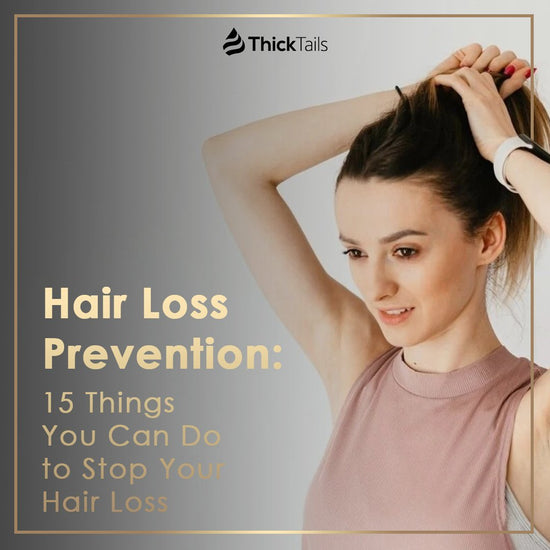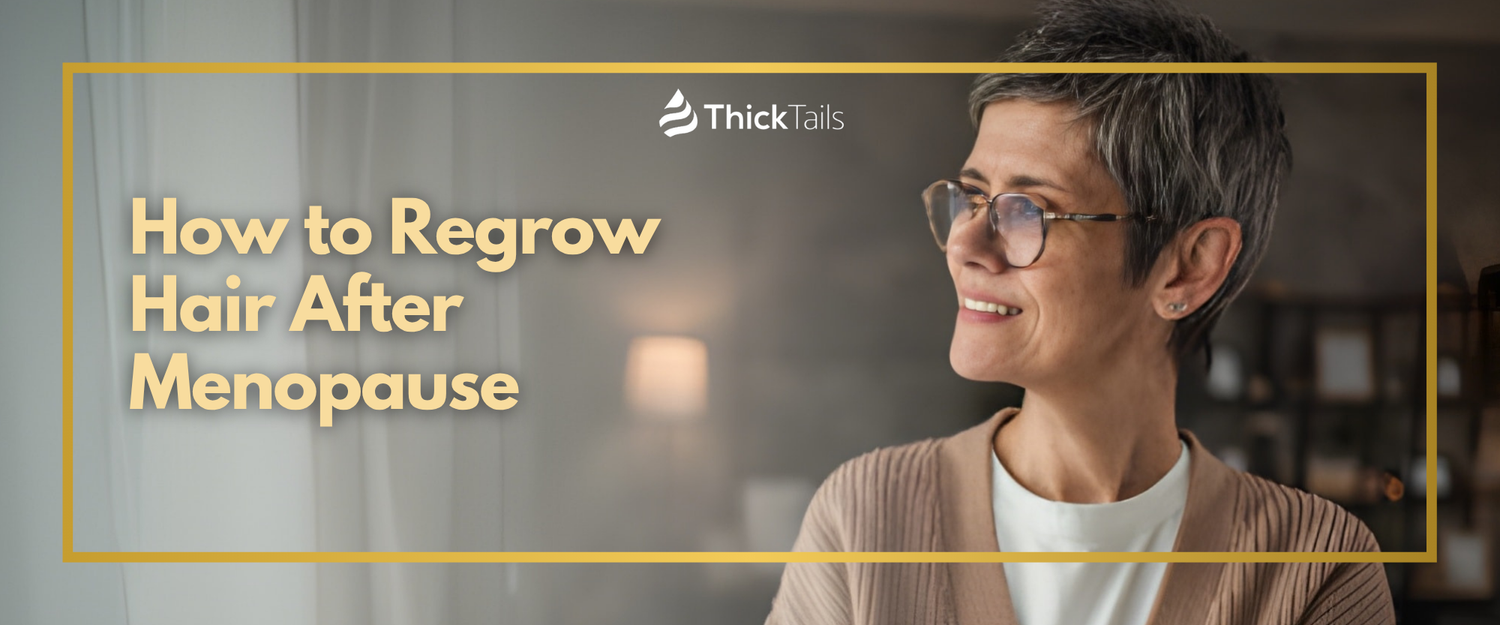Seeing a ball of hair on the floor or your comb is pretty normal. According to the American Academy of Dermatology, a human regularly sheds 50 to 250 hair strands every day. Extreme shedding of the hair may lead to alopecia, commonly known as hair loss. Men are not the only victims of hair baldness. One-third of women suffer from hair loss. A battle against losing hair strands is every woman's nightmare. Therefore, hair loss must be avoided at all costs.
But before you wage into a war against losing hair, get to know first how hair growth works.
THE HAIR GROWTH CYCLE
Hair growth begins within your hair follicles, which undergo three growth cycles. Anagen is the active growth phase, which usually lasts for two to seven years. In this stage, the cells rapidly divide, which results in longer hair strands every day. After some time, your hair experiences the catagen phase, a short transitional period before entering the resting state known as the telogen phase. In this cycle, your strands begin to fall out. Your follicles then remain dormant for the next three months before they get reactivated again. Based on the life cycle of hair, the anagen and telogen phases are the most crucial hair growth stages.
COMMON SIGNS OF FEMALE HAIR LOSS
When should you be alarmed? Check out the most common symptoms of female hair loss.
1. Thinning of hair
If your hair isn't as voluminous as before, you might be suffering from thinning hair. Hair loss begins with losing your hair's density. Experiencing this first symptom already serves as a warning for you.
2. Receding Hairline
A person suffering from hair loss will also experience receding hairline. If you weren't born with having high hairline, then this
3. Sudden loss of hair strands
Again, losing hair strands in a day is part of your hair's life cycle. However, losing a thousand hair strands in a day tells another story.
4. Having patchy spots
Having noticeable bald spots on your scalp is most likely a sign of hair loss. These patches can sometimes be itchy before hair begins to fall out.
5. Experiencing full hair loss
Some medical treatments, like chemotherapy, have side effects such as hair loss. However, a full-body hair loss can also be the long-term effect of neglecting the earlier signs.

CAUSES OF FEMALE HAIR LOSS: WHY IT HAPPENS
The first move towards defeating the enemy is to identify the root of the problem. Get to know why women suffer from hair loss.
1. Heredity
Hair loss can be passed down from one generation to the other, thanks to your so-called genes. A hereditary condition called Androgenetic alopecia is the number one cause of female-pattern baldness. Better check your family tree to know any member who might have been a victim of hair loss.
2. Insufficient nourishment
Nutrient deficiency is another possible cause of female hair loss. Many vitamins and minerals are essential for consistent hair growth. Depriving your body of receiving such nourishment triggers unwanted symptoms to show up, just like hair loss.
3. Hormonal Imbalance
Hormones are chemical messengers securing different bodily functions, and hormone level changes can adversely affect one's health. A particular hormone called dihydrotestosterone or DHT is liable for causing hair loss among men and women. What does this hormone do? DHT shrinks your hair follicles, and eventually, they die. If your body has too much DHT, more of your hair follicles are in danger.
4. Stress
When endangered or challenged, your body reacts by giving off stress-induced chemicals. This reaction may lead to a condition called Telogen effluvium. Hair follicles typically become dormant after a long time of being in the anagen stage. However, high-stress levels can accelerate follicles into a resting phase, leading to gradual hair loss.
5. Damaging Hair Treatments
Getting your treated doesn't mean it gets treated right. A lot of salon treatments involve the use of hazardous chemicals, which can trigger hair loss. Not only can they damage your hair strands, but irritate your scalp and hair follicles.
6. Exposure to Radiation
Women who undergo radiation therapy are most likely to experience excessive to full-body hair loss. This negative side effect is common among chemotherapy patients. Radiation is used to kill cancer cells. However, this medical treatment also destroys the healthy cells, and hair cells are no exception.
7. Post-pregnancy
Pregnancy is an arduous journey for every woman's body, from conception and even after giving birth. A decline in estrogen usually happens after delivery. This hormone level disturbance can cause excessive shedding of hair. Pregnant women and new mommies don't have to worry much about this childbirth-linked condition. Postpartum hair loss is an entirely acceptable and temporary bodily change. Here's the good news: You can limit your postpartum hair loss. Keep your body supplied with nutritious meals and prenatal vitamins.
8. Menopause
Women in their fifties may experience a significant change in their hair pattern. During menopause, female hormones estrogen and progesterone decrease, while the androgen DHT level upsurges. An increase in DHT can hamper hair growth. Women in their menopausal stage must also avoid stressful experiences as these can trigger hormonal imbalance.

HOW TO FIGHT THE WAR AGAINST LOSING HAIR STRANDS
Don't fret even if your hair strands are gradually falling out. Female hair loss is still treatable. Here are some methods to win against female hair loss.
1. Using effective and toxic-free hair products
No matter how fancy, addicting, or inexpensive that hair product is, don't be fooled. Millions of cosmetic products contain harmful chemicals which your hair needs to avoid. Conduct a background check of beneficial and detrimental ingredients before you grab anything on the vitamin aisle.
2. Increasing the intake of vitamins, minerals, and proteins
A healthy diet is the primary source of vitamins and minerals necessary for beautiful hair growth. Always include vitamin-enriched foods in your diet. Consult your doctor to get your nutrient levels tested and know what you are lacking. If you're nutrient-deficient, ingesting appropriate amounts of hair supplements may take your hair growth to a whole new level.
3. Undergoing hormonal therapy
An overwhelming increase of androgens in a woman's body is distressing. It can cause hormonal imbalance and may affect hair follicle growth, and women on their menopausal or postpartum stage may suffer the blow. One way to ward off female hair loss is to undergo hormonal therapy. This treatment involves the intake of female hormones to stabilize the hormone levels in the body. You may get hormone treatment by using pills and ointments. Consult your doctor first to avoid the adverse side effects of prolonged hormone replacement.
4. Good stress management
Stress may come and go in your everyday life. Instead of avoiding the inevitable, learn how to manage stress. Stress can cause your body to produce androgens, thereby releasing DHT as the by-product actively. Your hair follicles are at risk because of the DHT circulating within your system.
How can you effectively manage your stress levels then? First, identify the most noticeable stressors in your life: your career, family, or health issues. Next, include stress-free habits in your lifestyle. You may need to cut off desserts in your diet or start sleeping on time. Remember that your way of life affects your overall health and appearance. Lastly, do not restrain yourself from enjoying or relaxing. Give yourself a nice warm bath or treat yourself to a spa. Joyful or relaxing experiences signal your brain to send happy chemicals, thus improve blood circulation beneath your scalp. Therefore, it is vital to keep your stress at bay to stimulate hair growth.
5. Undergoing Hair Transplant
This method tops the list of expensive hair treatments. A hair transplant is implanting the donor's hair strands into the patient's scalp. There are two possible methods of hair transplant. During the surgery, the doctor scrapes off the scalp's affected portion and divides the strip into hundreds or thousands of tiny grafts. Another procedure involves the tedious plucking of hair follicles on your scalp. This method will allow your follicles to heal and regrow new strands. You may experience throbbing pain, bleeding, and scarring as after-effects of this treatment. Gain better insight into the risks and benefits of this surgery by consulting your doctor.
THE NEXT STEP
Winning the battle against losing hair strands is no easy job, but you have to do your part to keep your locks thick, long, and healthy. Experiencing hair loss is not something to be afraid of, as long as you treat your hair right.
Female hair loss is also not a laughing matter. It is a health condition that needs immediate attention and treatment. So if you know any female relative, friend or colleague who might be suffering from hair loss, do not hesitate to help them. Empower your fellow women by recommending them with some of the best and all-natural hair growth products for female hair loss.
SEE MORE:
Feed your curiosity on hair restoration and hair loss cure by checking some of the best hair care products for thinning hair. Learn more about female alopecia, the best shampoo for hair loss and hair growth.









